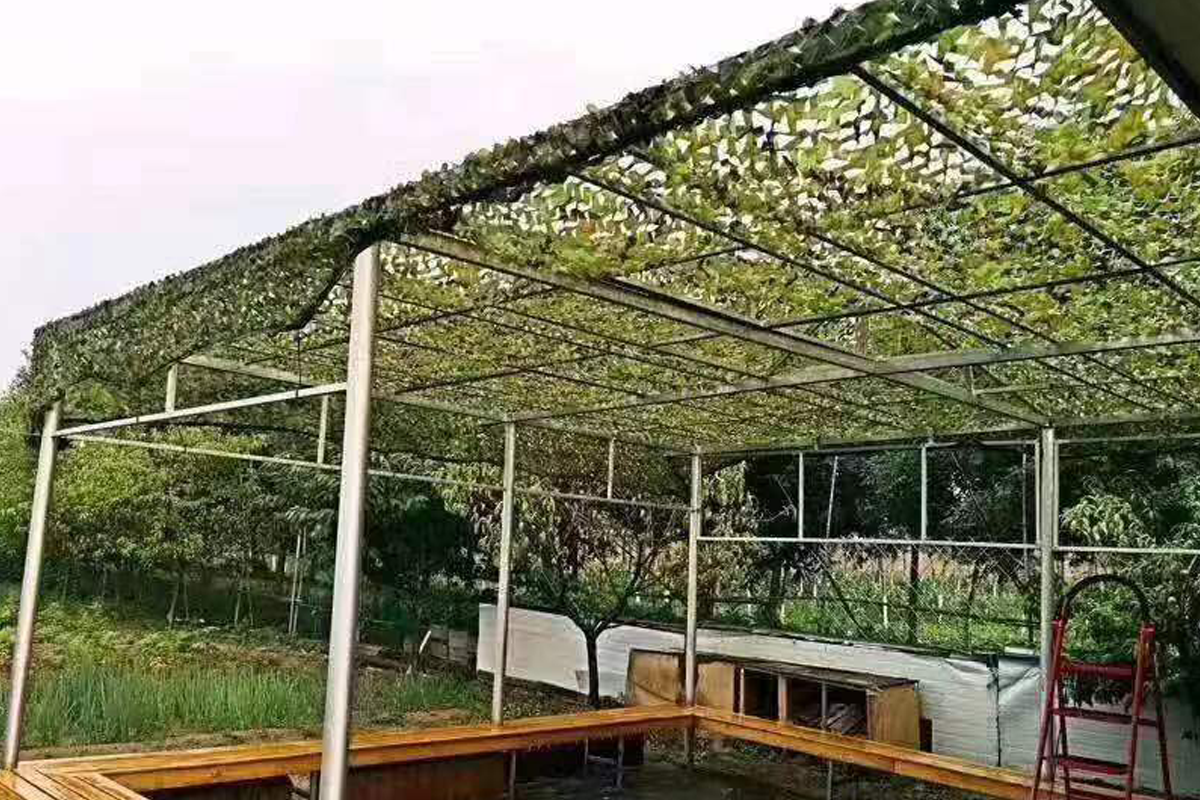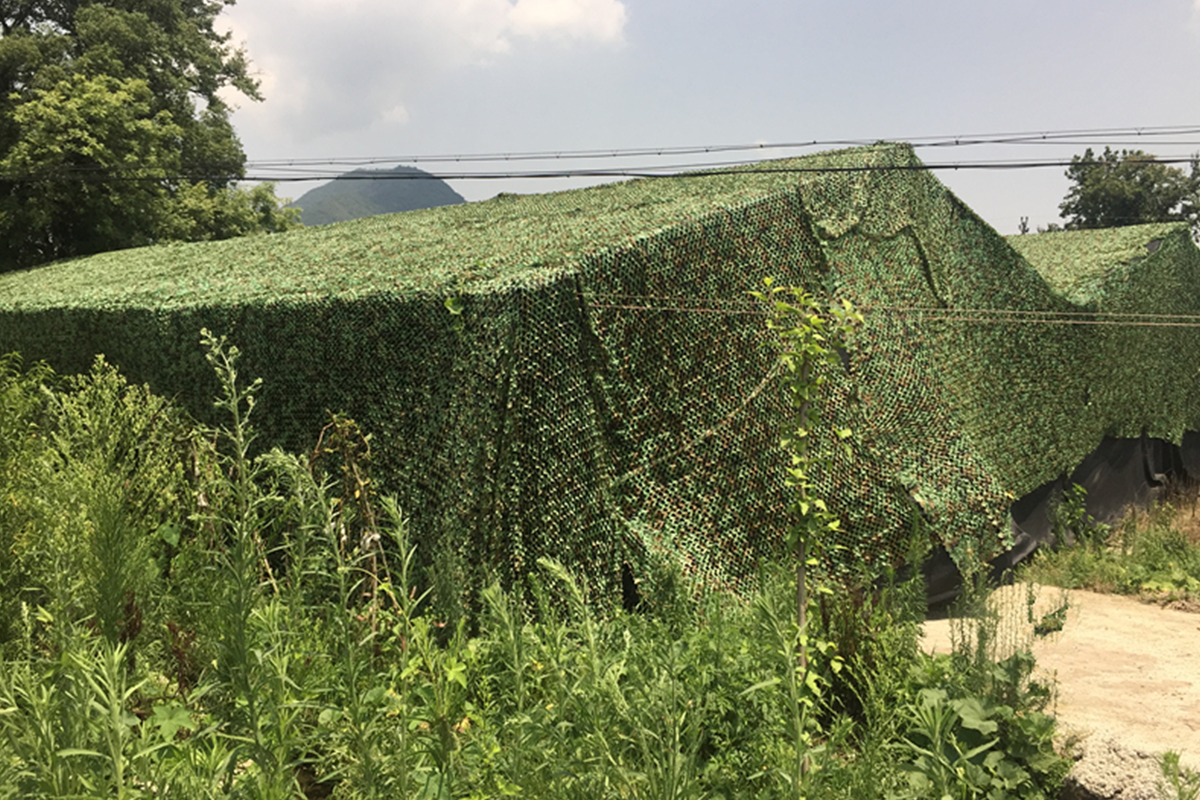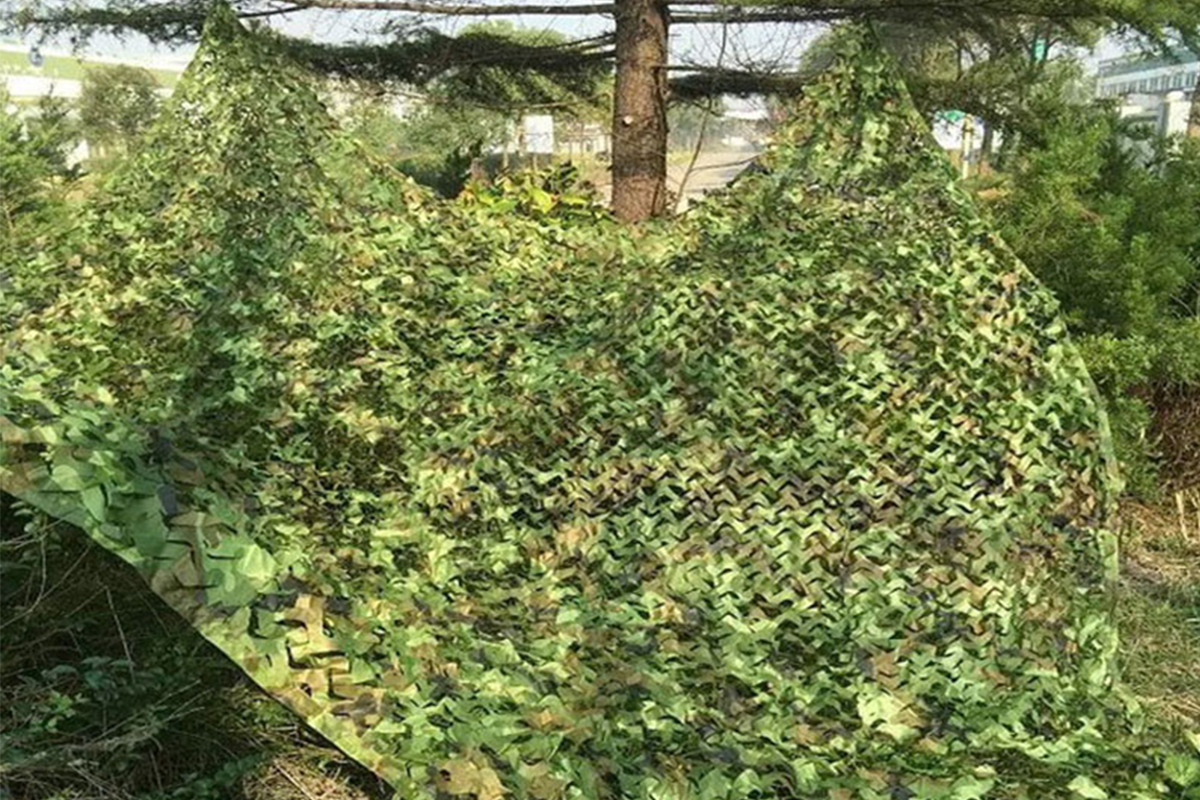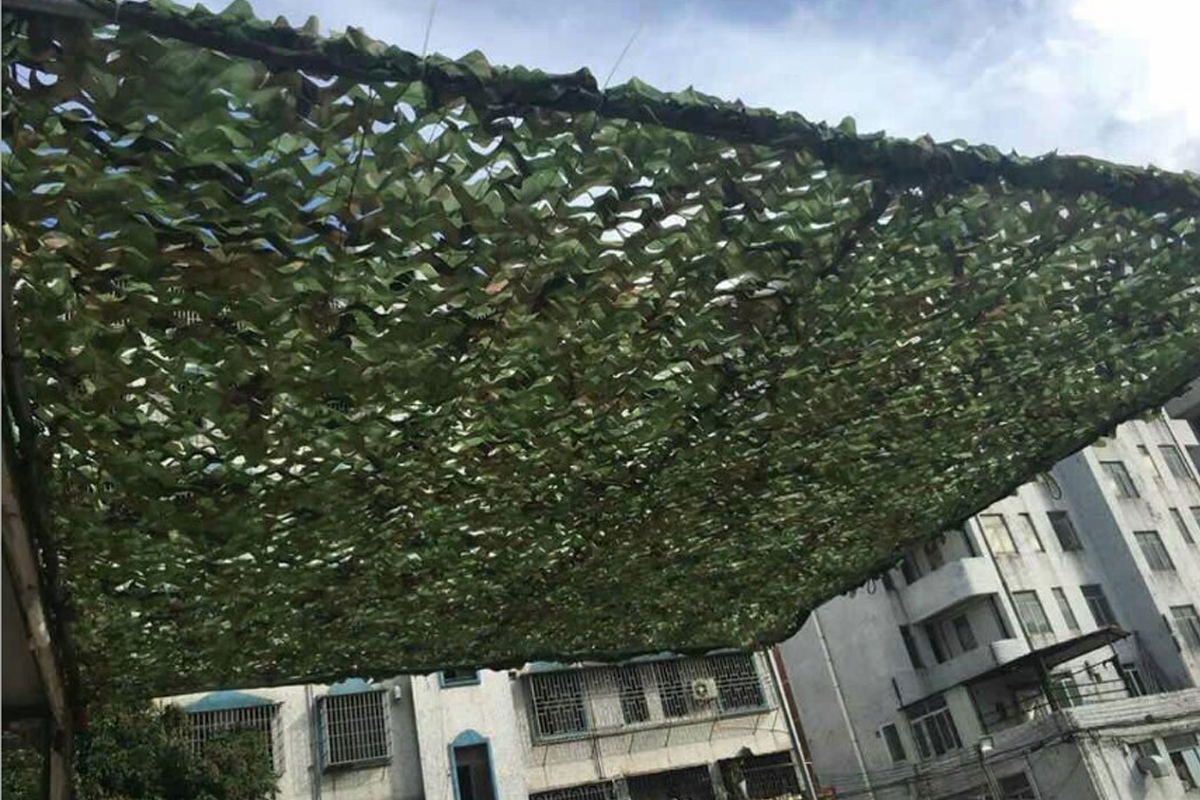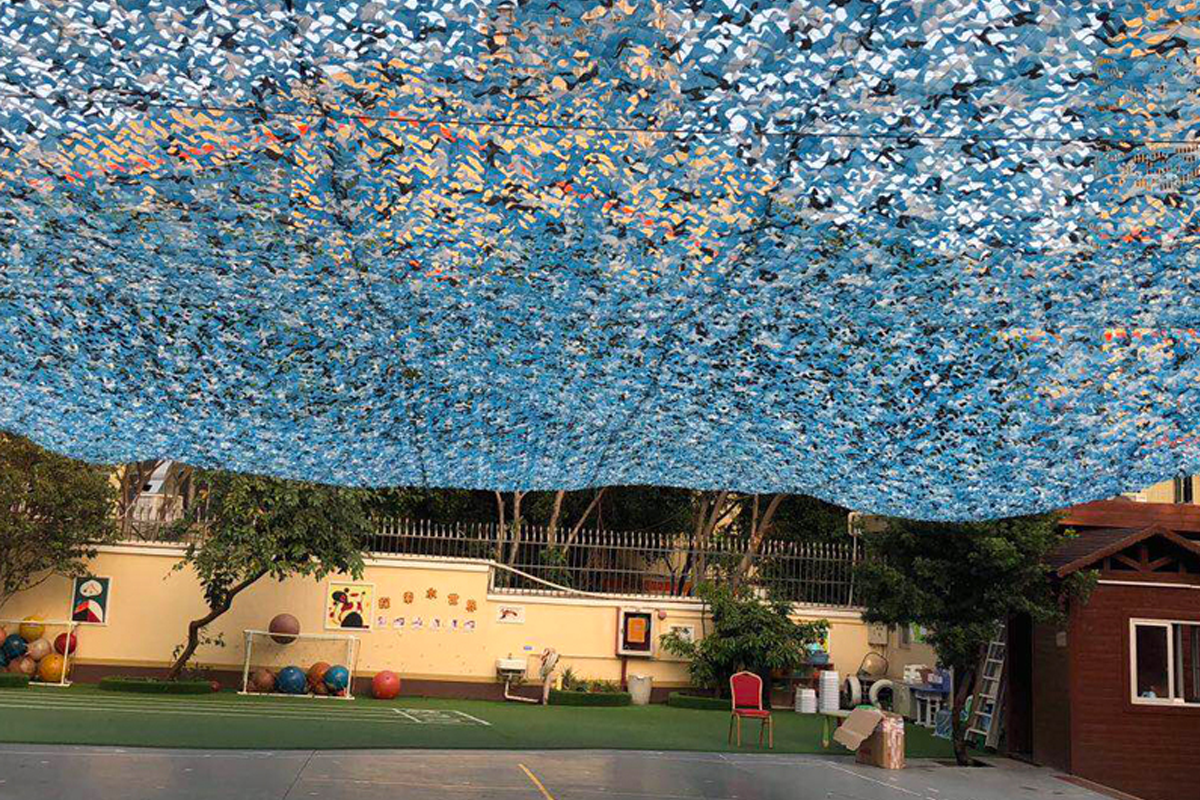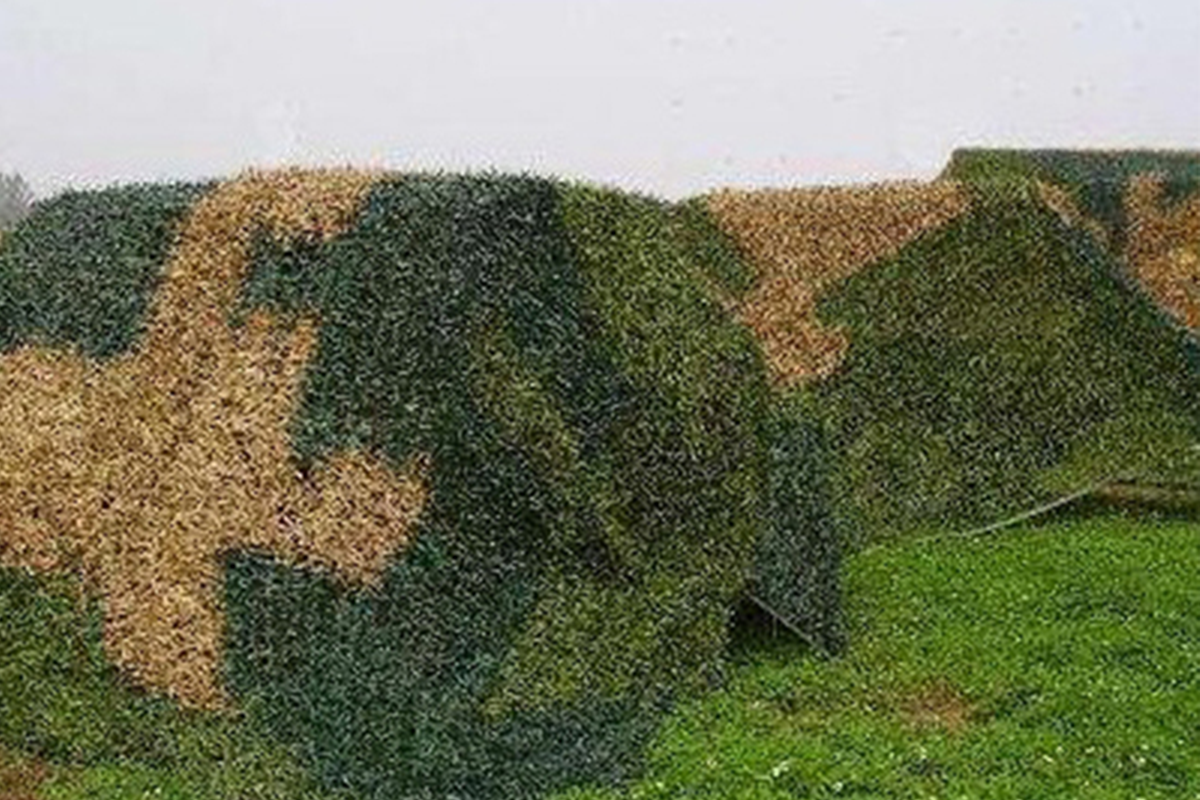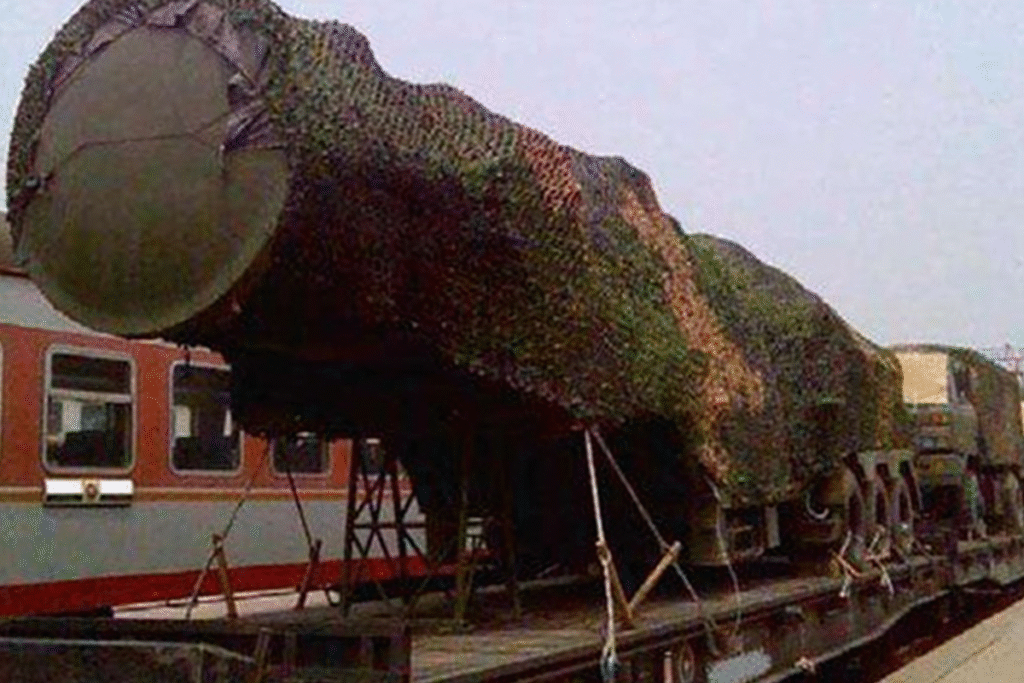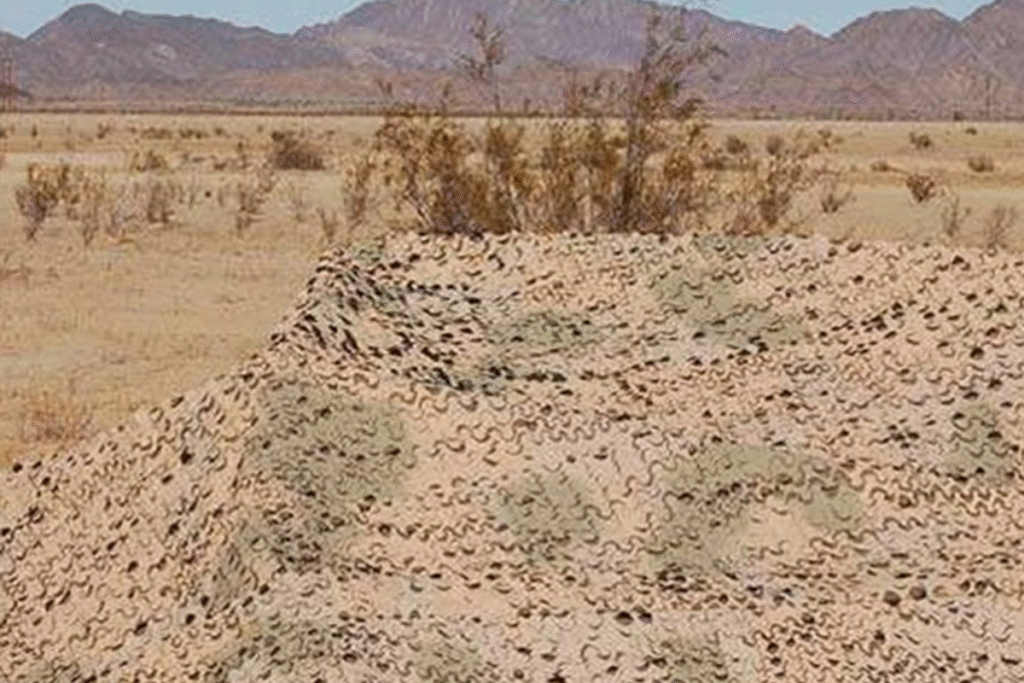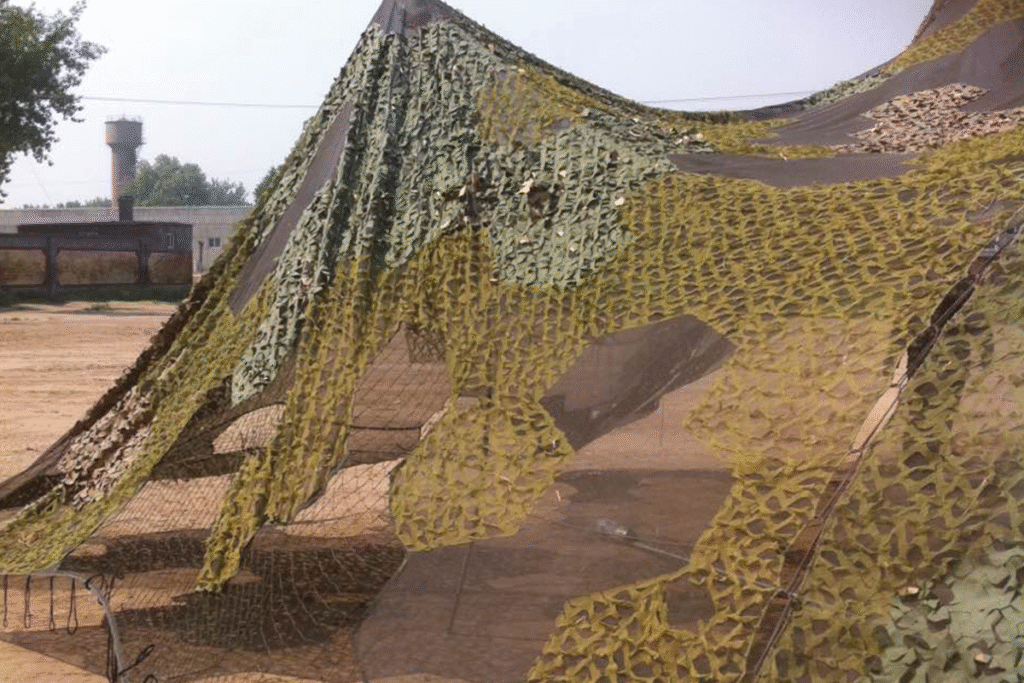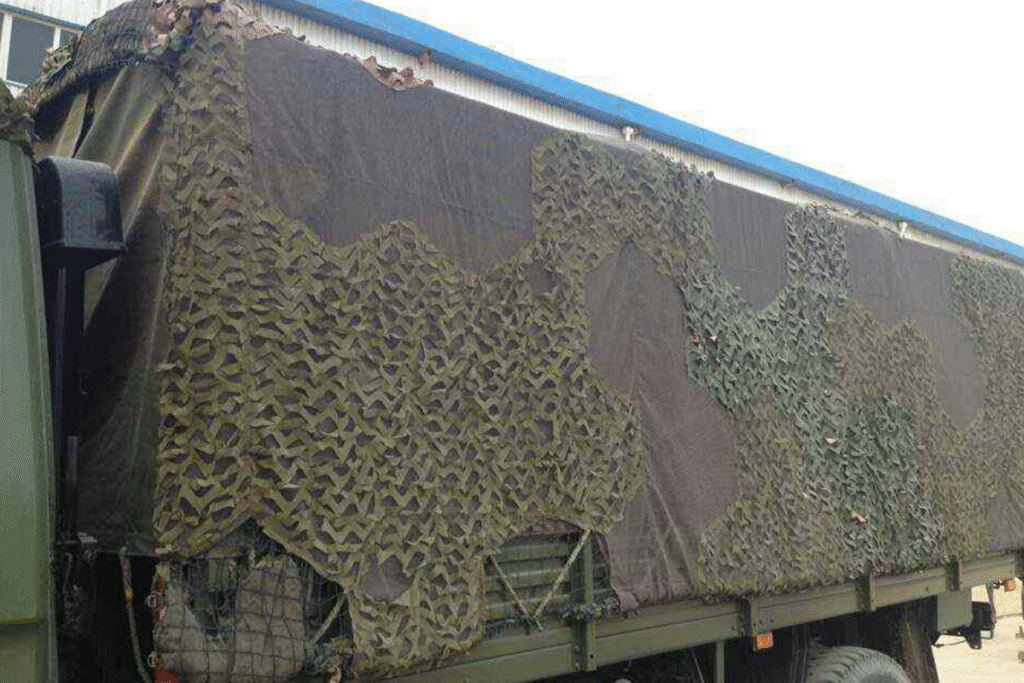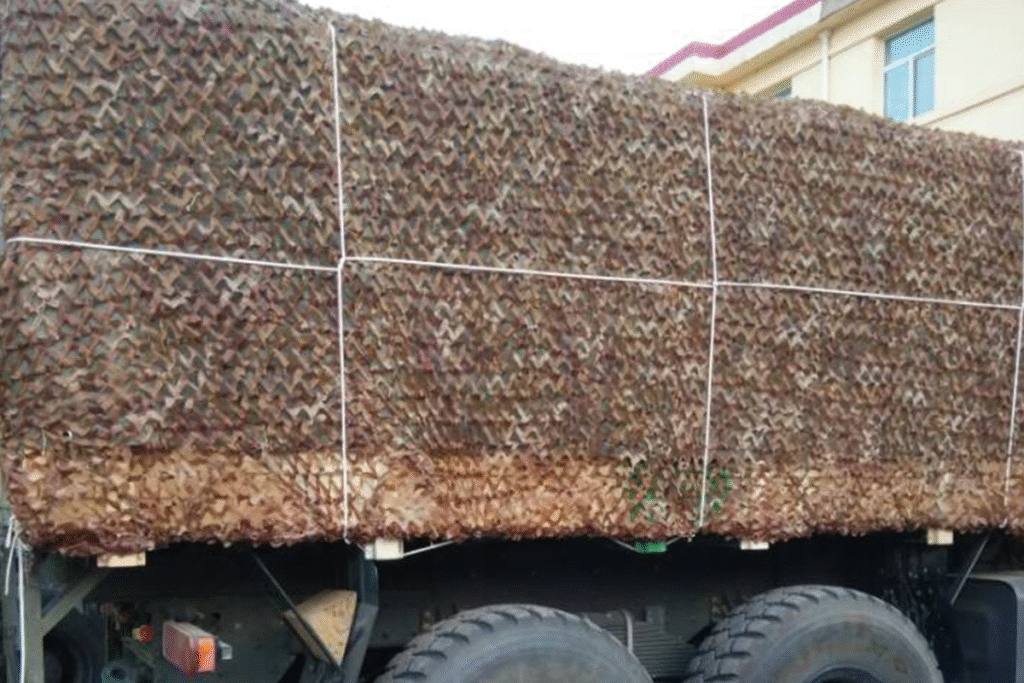Classification of civilian camouflage nets
The civil camouflage network focuses on practicality and scene adaptation, and the technical threshold is low, which can be divided into two major directions:
- Practical and functional type
Anti-aerial camouflage net
Material: Oxford cloth punching + mesh rope rack, customized size (2×3m to 10×150m).
Uses: Real estate projects cover illegal buildings and garbage dumps; Industrial plants evade satellite inspections.
Birdwatching/Photography Camouflage Network
Characteristics: Lightweight (Oxford fabric material), waterproof and mildew-proof, grass-like texture to reduce disturbance of animals.
Shading/protective netting
Scene: Courtyard shading, construction site dustproof, and basic camouflage aesthetics.
- Decorative theme type
Film and television scene network: Restore the battlefield environment, such as blasting bunkers and trench sets.
Theme park decoration: military-themed bars, immersive sets in field parks.
Home landscaping: Camouflage elements are used for wall decoration, garden fences, highlighting military style.
